Natural dyes have a richness, harmony, and depth that is unmatched by synthetic colours. Our line of natural dye colours have been carefully selected to be the most lightfast and colourfast dyes that grow well in our climate and soil and that offer the most versatile range of colours. The plant material is dried on site immediately after harvest to preserve quality and maximum strength of colour. We hope you will not only love the vibrancy and range of our natural colours, but feel good about using them in your creative work.
Learn more about getting started with natural dyes >
Our natural plant dyes
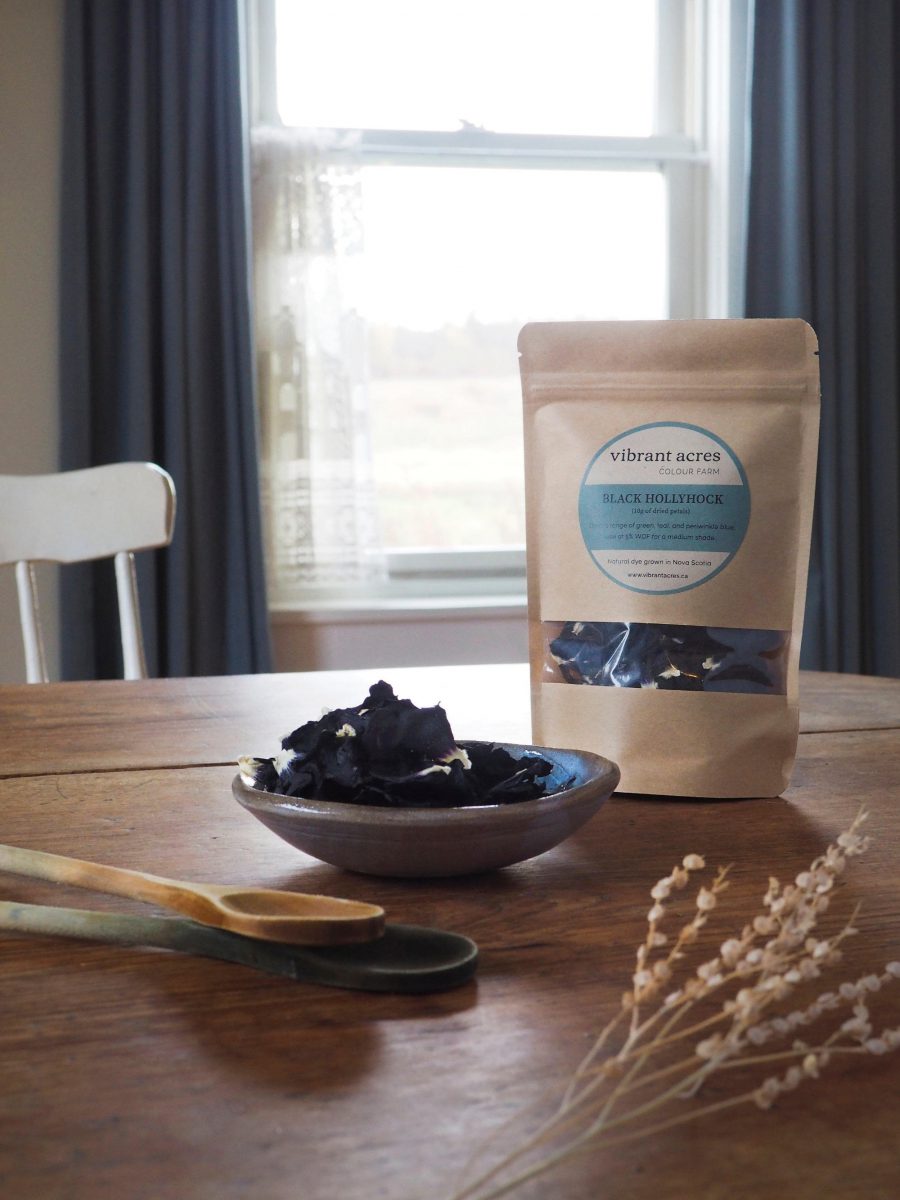
Black Hollyhock
Black Hollyhock allows you to achieve rich complex blues, greens, and teals that would otherwise require the more involved process of creating an indigo vat. While the colourfastness is not optimal, the ease of use and uniqueness of colour make it a joy to dye with for personal projects.
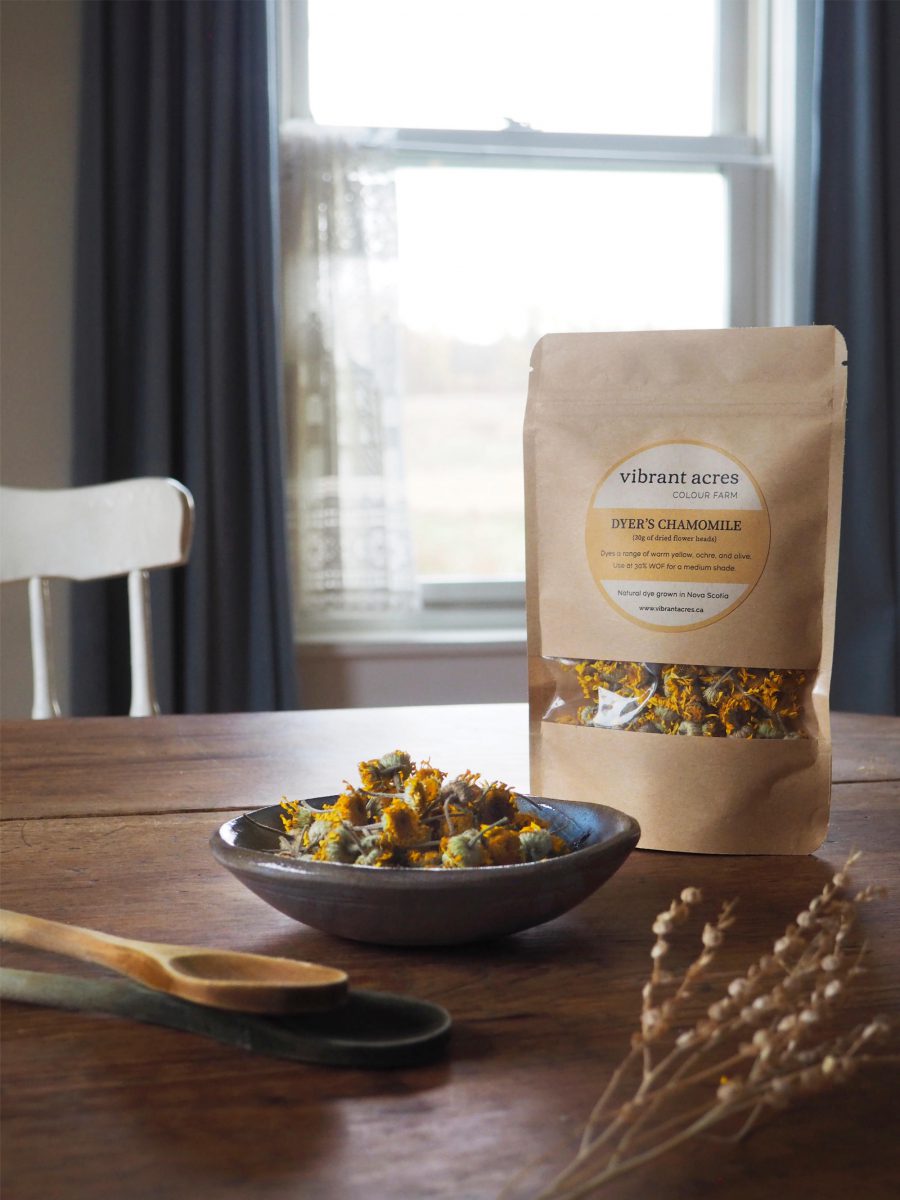
Dyer’s Chamomile
Dyer’s Chamomile dyes a beautiful soft butter yellow. Adding a touch of iron to your dye pot can turn its warm golden dye to a rich yellow ochre and range of olive greens.
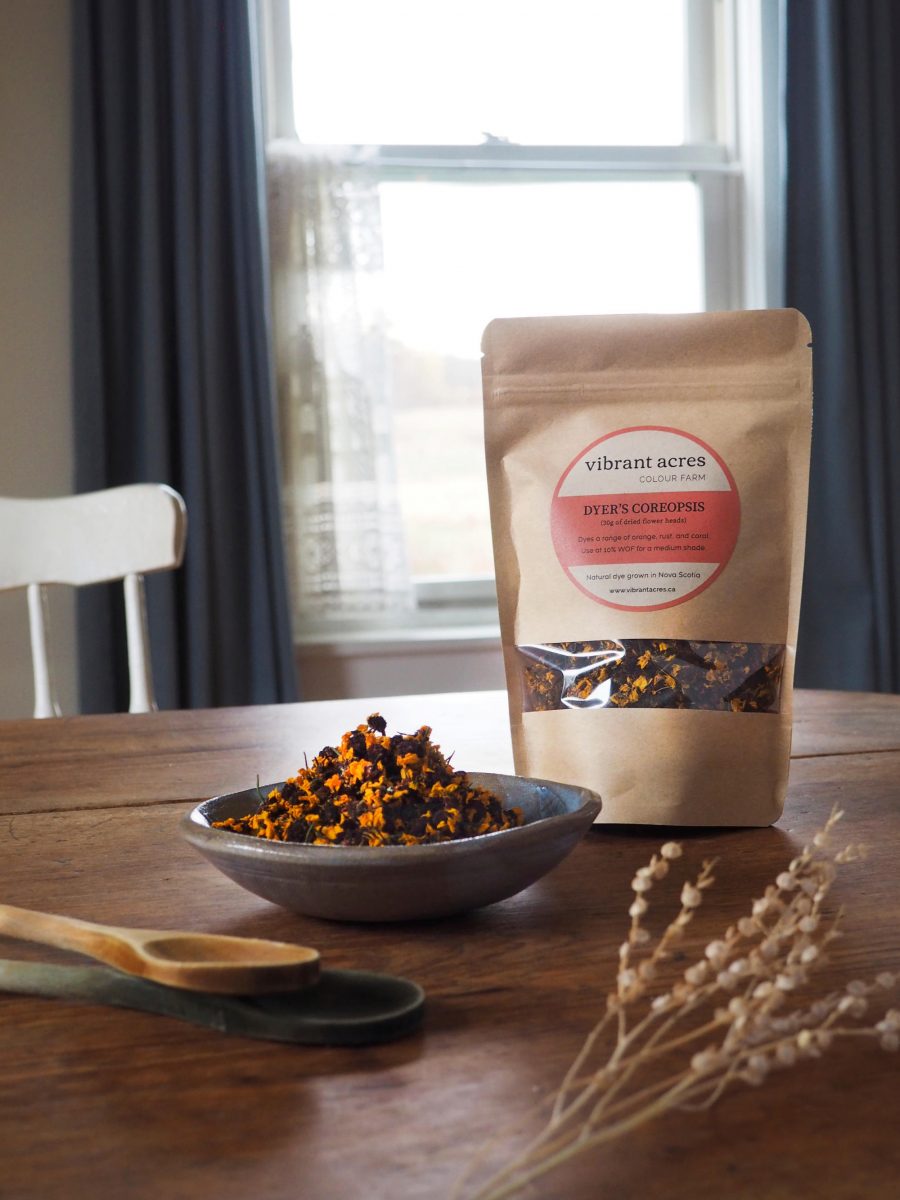
Dyer’s Coreopsis
Dyer’s Coreopsis produces a vibrant range of colours with relatively little effort to extract or dye which makes it incredibly versatile and satisfying to dye with. It dyes a beautiful warm orange colour and can easily be modified with iron or PH to achieve yellows, pale pinks, corals, and deep rust colours.
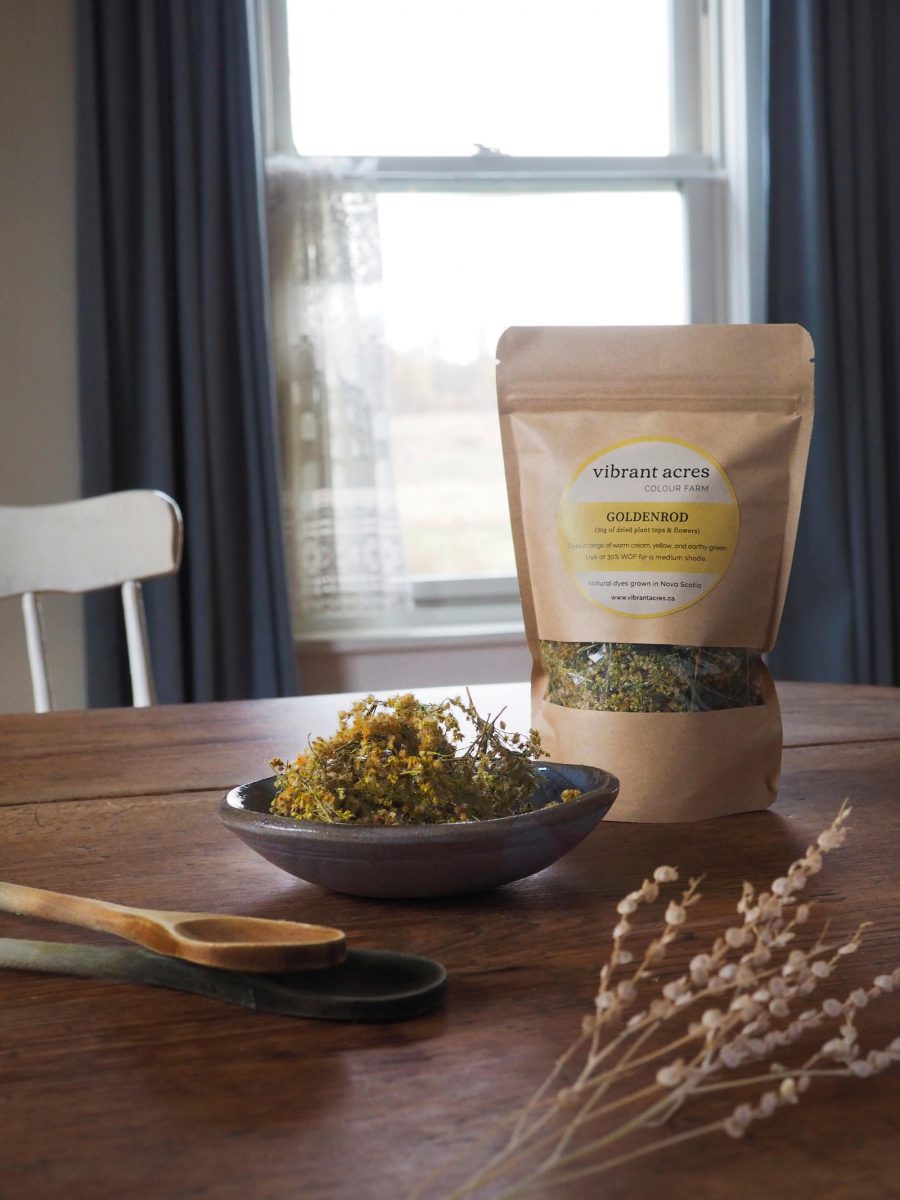
Goldenrod
Goldenrod is a wild plant that grows readily in many parts of Canada making it a truly local source of yellow. It dyes a beautiful warm cream to a rich sunny yellow. It can be overdyed with indigo to create a gorgeous range of vibrant greens.
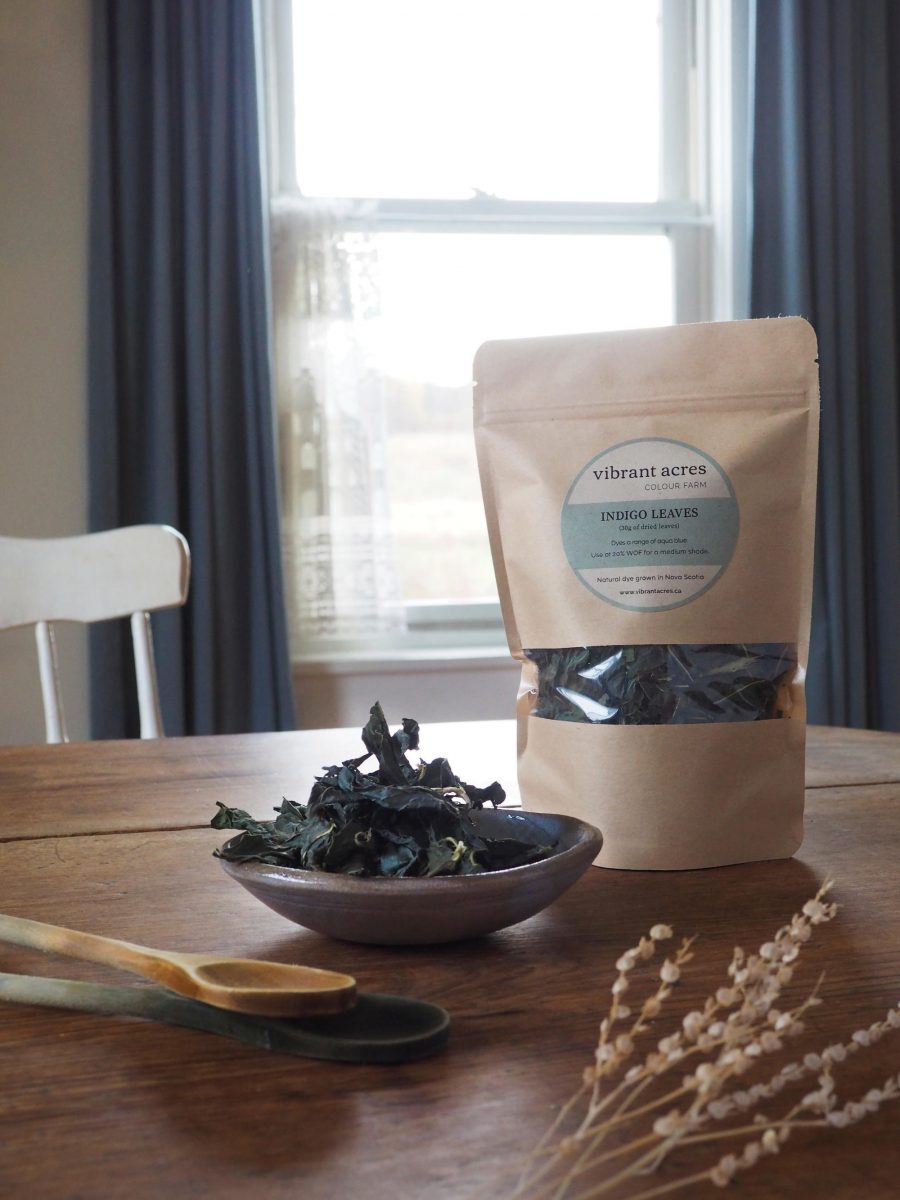
Indigo (dried leaves)
Dried indigo leaves will dye a range of light aqua blue, teal, all the way to a rich medium blue depending on the process you follow and quantity of leaves you use. Indigo requires a more complex extraction process than other colours. Dried indigo leaves can’t be beat as a local and affordable source of colourfast blue dye.
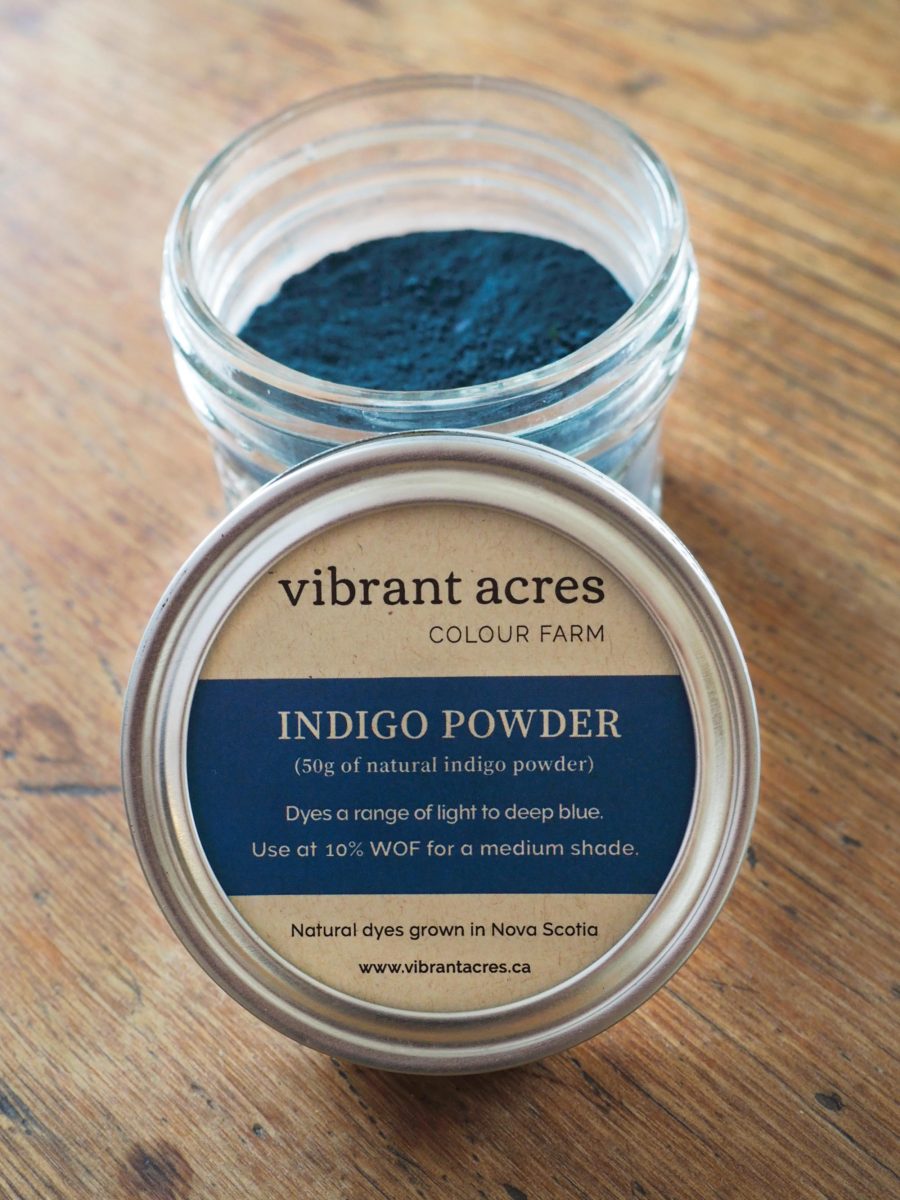
Indigo (powder)
Pure indigo powder dyes a range of pale blue through to a deep rich indigo blue. Our indigo powder is harvested from Japanese Indigo plants and is grown and processed entirely on our farm here in Nova Scotia. We’re so pleased to be making a Canadian-made indigo powder available to artists and makers. We hope you enjoy our “Fundy Blue”!
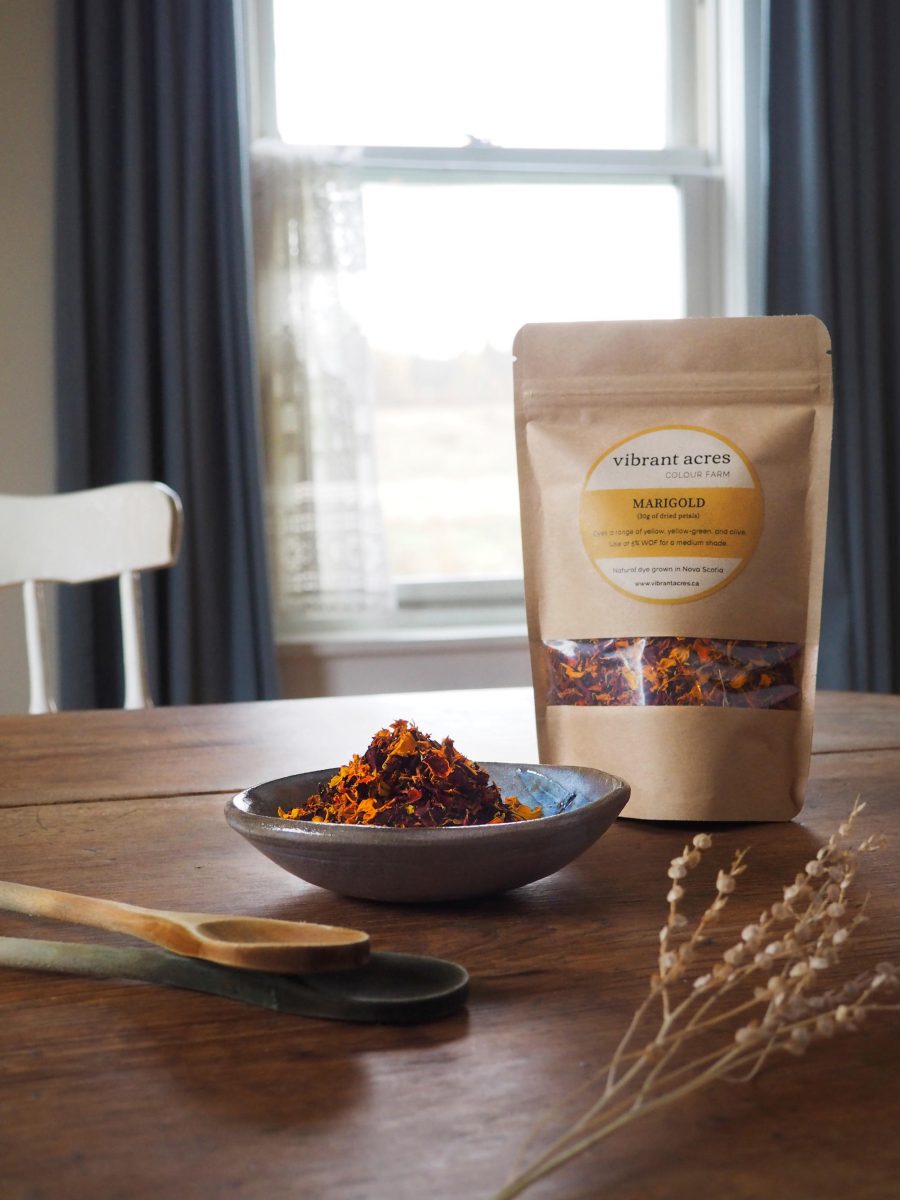
Marigold
Marigold is one of the easiest and most satisfying plants to dye with, creating a rich beautiful yellow with a relatively small amount of plant material and little effort of extraction. Dipping it in iron water will give a gorgeous yellow ochre to olive green.
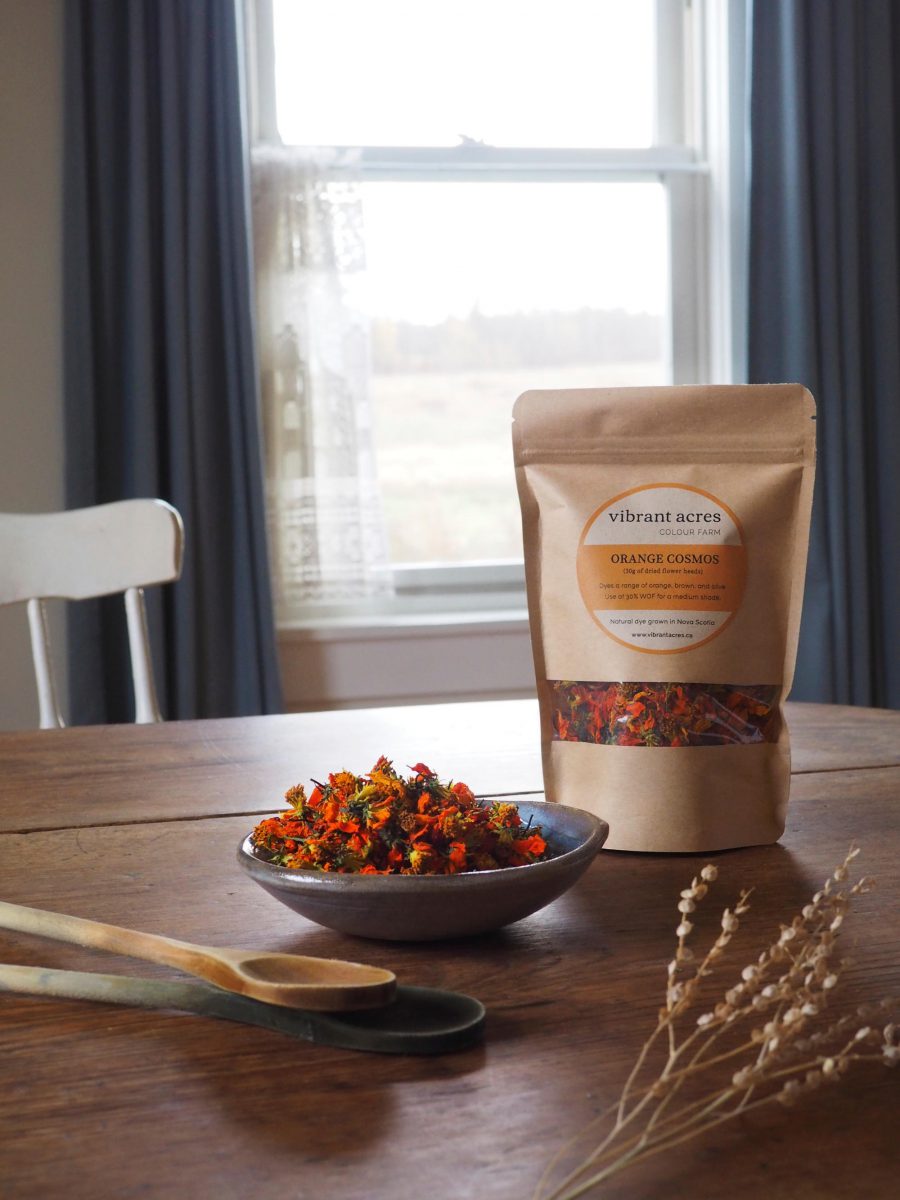
Orange Cosmos
Orange Cosmos dyes a vibrant pumpkin orange colour on both wool and cotton. It can be shifted to give a range of reddish-orange, olive, and brown.
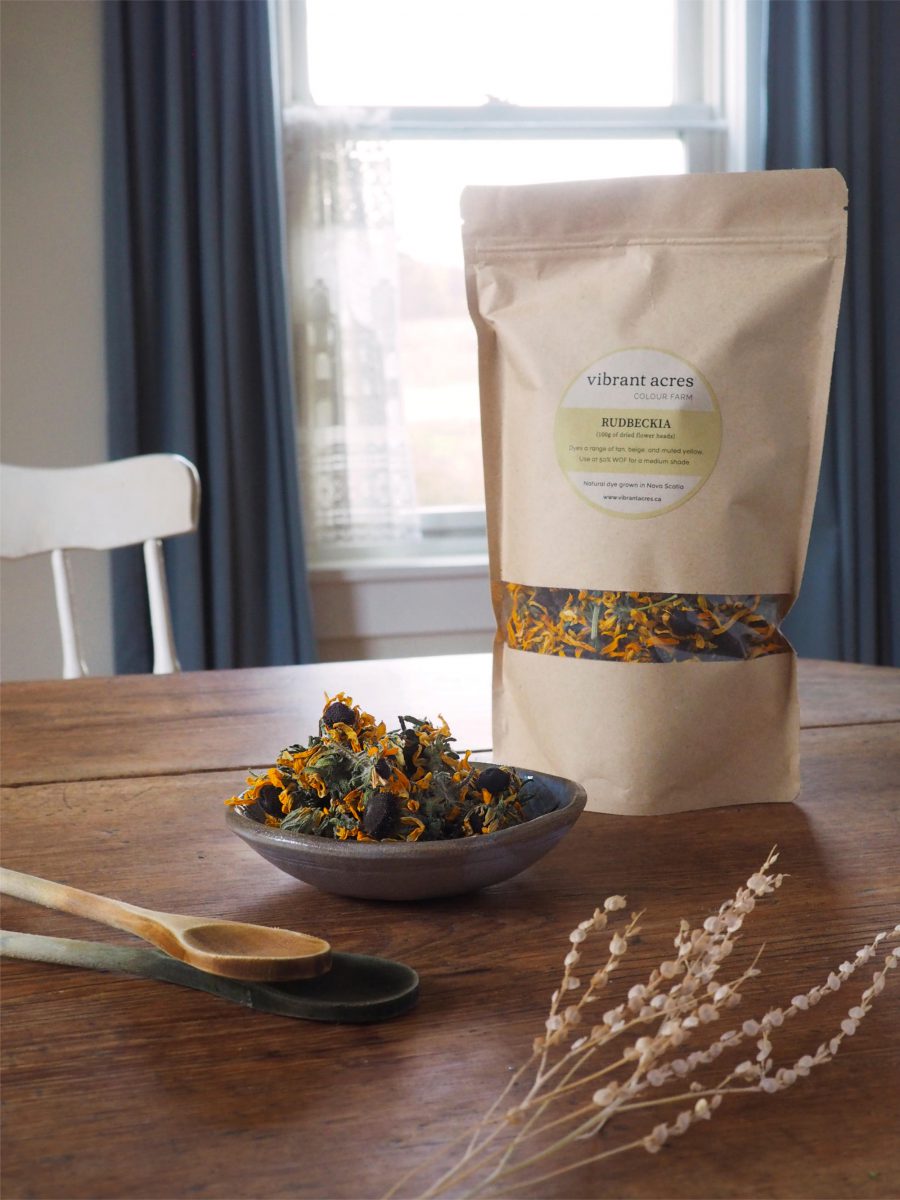
Rudbeckia
Rudbeckia tends to dye a more muted range of colours that is appealing in a soft, earthy, natural, and organic way. One feature of this dye plant is that it produces a fairly stable colour that is not much affected by light, washing, or by PH shifts.
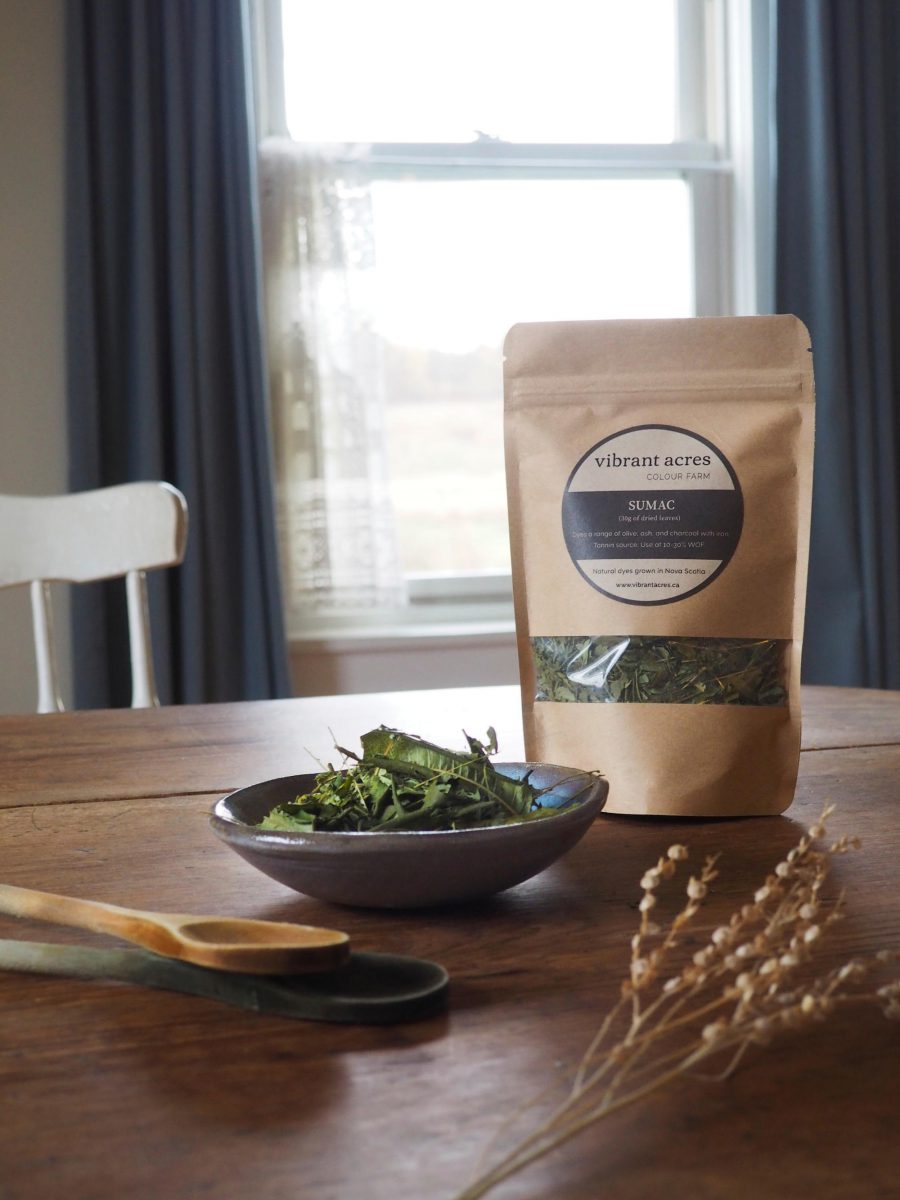
Sumac
Sumac is highly versatile dye plant that can also be used as a tannin to assist other dyes in bonding to your fibre. It dyes anywhere from a bright, cool yellow, through to shades of tan and deep olive green. It can also be used with iron to produce a light or deep neutral grey dye – especially on cellulose/plant fibres.
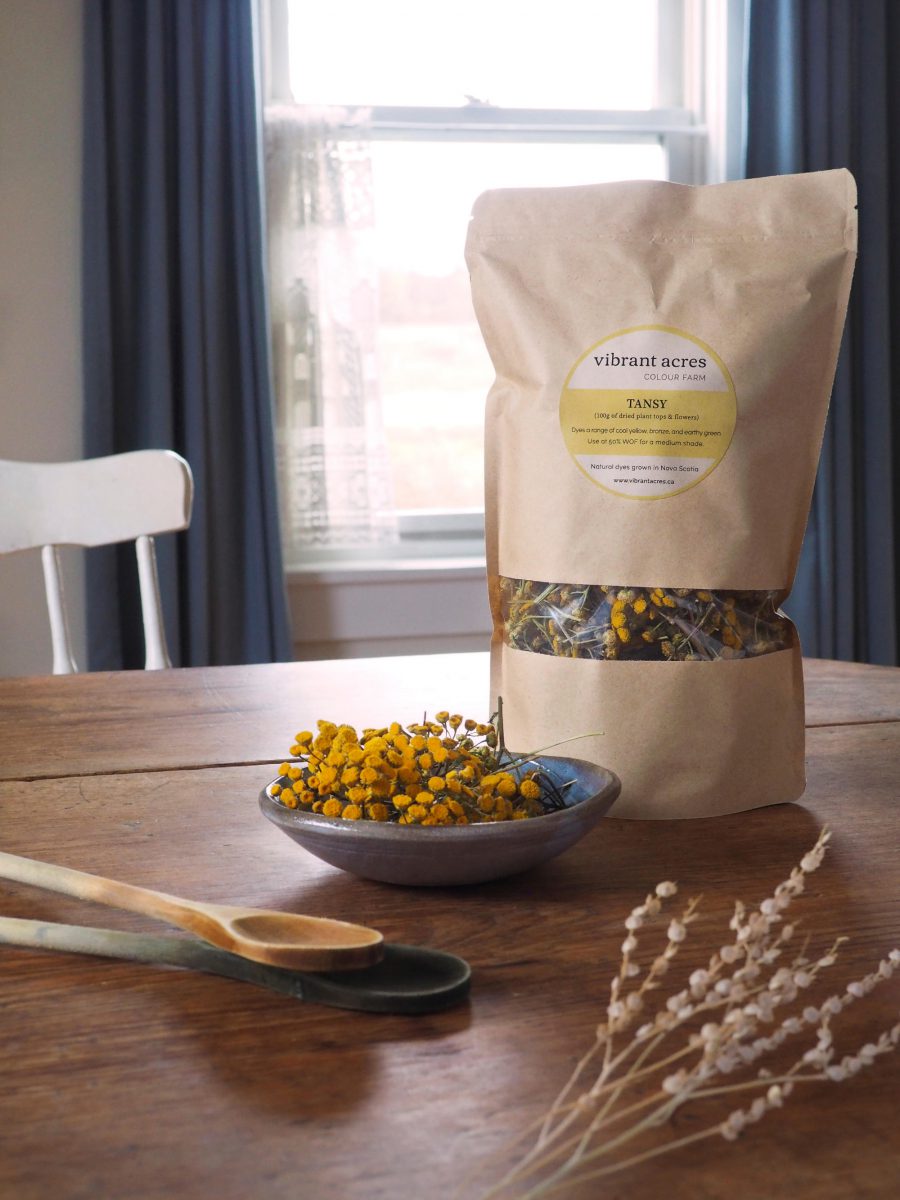
Tansy
Tansy dyes a lovely soft cool lemony yellow. Iron will shift the colour to a bronze or earthy green. An alkaline PH shift produces an orange-ochre colour. Tansy yellow can be overdyed with indigo to create beautiful greens.
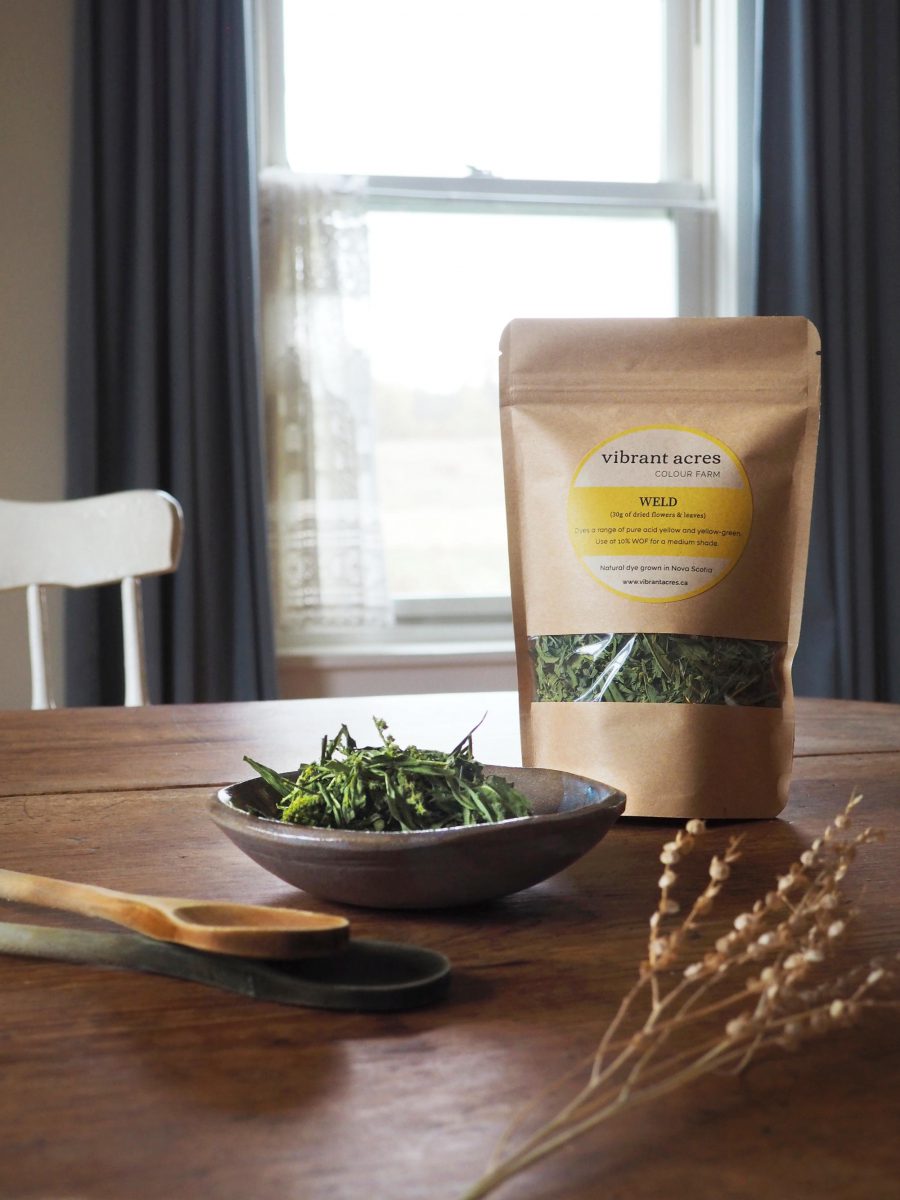
Weld
Weld is one of the oldest, purest, and most colourfast yellow dyes and is excellent for overdyeing with other colours to produce teals and greens. On its own, it dyes a brilliant cool yellow.